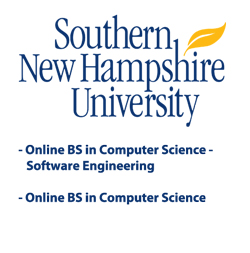
When to Pursue a Master’s in Software Engineering?"There is no one right time to go back to school to pursue a master’s in software engineering."
Software engineering is not like some other professions where there is a well-defined scope of practice that depends on educational level. Still a master's can look good on your resume, particularly if you are applying to giants like Google. Some senior positions advertise that a master's is preferred. In the latter case, though, a master's is an enhancement; several years of successful work experience is essential. There is no one right time to go back to school for a master’s. Software engineering programs at the master’s level emphasize different aspects of the profession. Some include a major real-world design project, others a thesis. There are often quite a few electives included. [Find online master's in software engineering programs.] Reasons to Get a Master’s in Software EngineeringHere’s a look at some of the reasons software engineers decide to complete a master’s and what they might look for in a program. Climbing the Career Ladder Additional education can help you move into new branches of the field or re-enter after an absence. If you are currently employed, but you have your sights set higher – a senior, lead, or manager position – you may want the master’s. If you live in a large metropolitan area with a strong software industry, your employer may even pay to give you the additional training. Some master’s programs will take you straight out of school; others require real world experience. It depends on program emphasis and the needs of the community. The school may offer multiple tracks for students with different needs. Seattle University requires students to have at least two years of work experience before enrolling in a master’s program. The director notes that students who finish bachelor’s programs in computer science but want to explore further or get more education in a particular area of the field, have the option of applying to the computer science master’s program. In order to be successful in the software engineering design project, though, substantial field experience is necessary. Rochester Institute of Technology prefers that students have at least a year of work experience before enrolling in the master’s program, but some students are accepted straight out of school. Soon RIT will offer a combined bachelor’s/ master’s program for students who want an additional year to deepen their knowledge and pursue individualized studies. Filling in Gaps If your undergraduate degree wasn’t in software engineering, that can be impetus to go for the SE master’s. This can be true even if it was in a related computer field. Lack of Completing an Undergraduate Major Design Project ABET-accredited undergraduate software engineering programs include a major senior design project. You may want to choose a master’s program with a major design project if you didn’t have that opportunity the first time around. You and your teammates will get a chance to solve a real-world problem for an industry or nonprofit. This can be an opportunity to develop teamwork and project management skills as well as increase your technological savvy. If you are in the market for a first position, or a better one, you can also make valuable contacts. Pursuing individual Goals If you did a major design project as a senior, and you had the opportunity to develop the team skills you need to work on large-scale software development projects, you may want a different experience at the graduate level. Some SE master’s programs include a thesis as the culmination. Students sometimes choose this route because they are contemplating getting a PhD. For others, though, the master’s is the final goal. What you put on your resume, or talk about at an interview, won’t just be the degree that you earned. It may well be your advanced knowledge in a particular area of the field. |

